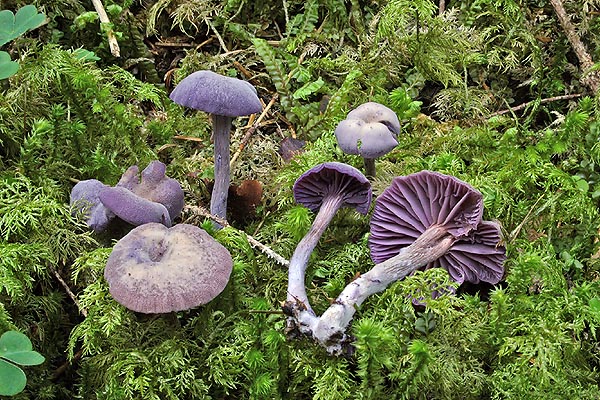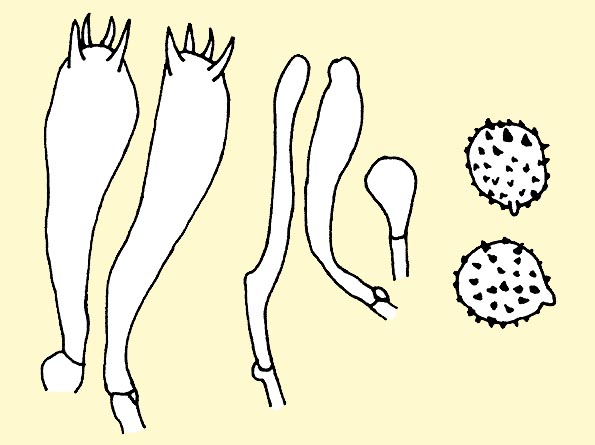
Text © Pierluigi Angeli

English translation by Mario Beltramini

Attracting for its colour, the Laccaria amethystina has no gastronomic value © Pierluigi Angeli
Family: Tricholomataceae R. Heim ex Pouzar 1983.
Genus: Laccaria Berkeley & Broome 1883.
Laccaria amethystina (Hudson) Cooke, 1884.
The name of this species comes from the Latin “amethysteus”, which reminds the amethyst, of pale violaceous colour.
Description of the genus
The genus Laccaria groups species with little fleshy cap, flesh-coloured, orange rose, lilac violaceous, brown-purple; adnate to decurrent-adnate gills, spaced, thick, broad, coloured; the spores are aculeate, if smooth with thick wall, white in mass.
Description of the species
Cap: 0,5-5 cm, convex at the beginning, then flattened and even depressed at the centre; margin, in the young fungus, rounded then straight, undulate, rugged. The cuticle is smooth, felted, opaque, hygrophanous; fully violet-amethyst; when the weather is dry, it may be found also bluish-grey, cream-ochre or dirty white with lilac-coloured reflexes.
Hymenium: adnate gills and also little decurrent, much spaced, broad, thick, anastomosed on the back, intercalated by variously long gills, bright violet, pruinose (lens), irregular edge.

Laccaria amethystina: basidia, cystidia and spores © Pierluigi Angeli
Stem: 4-6 x 0,3-0,8 cm, cylindroid, somewhat enlarged at the base, at times straight, at times undulate, longitudinally striated by white fibrillae on amethyst-violet background, paler at the base of the stem, which is covered by a white down.
Flesh: exiguous and frail in the hat, fibrillose in the stem; violet, losing colour towards the base to become violet-grey. It has mild smell and taste.
Habitat: growing in summer and autumn on soils rich in humus, both under latifolious and coniferous trees.
Edibility: without any gastronomic value.
Microscopy: spores: subglobose, aculeate, 8-11 × 7-9,5 µm. Basidia: clavate, tetrasporic, with joint buckles. Cystidia: filiform or vesicular.
Remarks: It is an unmistakable species, due to the amethyst-violet colour present on the cap as well as on the stem; only in very dry weather old specimens may lose their typical colour and create some difficulties in determining them. It is a rather common species which prefers the humid and cool woods of both latifolious and coniferous trees.
Basionym: Agaricus amethystinus Hudson, Flora anglica: 612, 1778.
Synonyms: Collybia amethystina (Hudson) Quélet, Flore mycologique de la France et des pays limitrophes, 237, 1888; Russuliopsis laccata var. amethystina (Cooke) J. Schröter, Kryptogamen-Flora von Schlesien 3-1(1): 623, 1885; Laccaria hudsonii Pázmány, Zeitschrift für Mykologie 60(1): 7 1994.
→ For general notions about Fungi please click here.
→ To appreciate the biodiversity of MUSHROOMS please click here.
